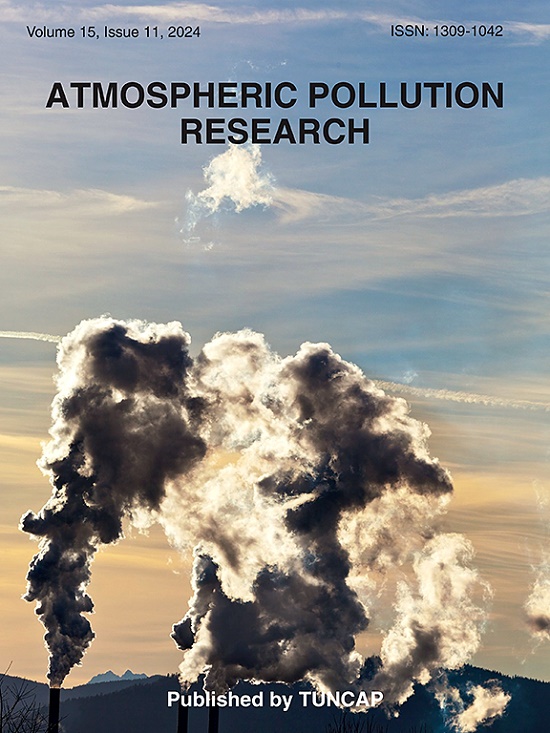Examining the structural properties of hydrophilic and hydrophobic organic aerosols using 1H NMR: Diurnal variations and source apportionment
IF 3.9
3区 环境科学与生态学
Q2 ENVIRONMENTAL SCIENCES
引用次数: 0
Abstract
The behaviour of the carbonaceous aerosols during the rainy season and the diurnal variations in their structural groups have not been thoroughly examined. The present study aims to understand the structural composition of hydrophilic and hydrophobic organic aerosols (OA) at an urban background location in Mumbai, India. The carbonaceous fractions, i.e., Elemental (EC) and Organic (OC) Carbon, accounted for 14–34% of the total PM10 (Particulate matter with aerodynamic diameter ≤10 μm). The PM10 and EC were maximum in the morning, while OC was the highest in the evening. The aliphatic structural groups were more concentrated in the total fraction, contributing 53–62% of the total resonances. The total concentrations of the structural groups in both hydrophilic (29.2 ± 9.8 μmol/m3) and total (197.8 ± 154.3 μmol/m3) fractions were highest in the morning. Traffic emissions impacted the morning and evening aerosols, as suggested by the broad aliphatic and sharp aromatic resonances observed in the total fraction. This is further corroborated by the variability in EC and OC, their significant correlations with Volatile OC and Nitrogen oxides, and their contribution to regression models and principal components. The afternoon aerosols demonstrated characteristics of Secondary OA. Our work extends the present understanding of the diurnal variability and the heterogeneity of the hydrophilic and hydrophobic structural groups in organic aerosols.

碳质气溶胶在雨季的行为及其结构群的日变化尚未得到彻底的研究。本研究旨在了解印度孟买城市背景位置的亲水和疏水有机气溶胶(OA)的结构组成。碳质组分,即元素碳(EC)和有机碳(OC),占总PM10(空气动力学直径≤10 μm的颗粒物)的14-34%。PM10和EC在早晨最高,OC在晚上最高。脂肪族结构基团在总分数中更为集中,占总共振的53-62%。亲水性组分(29.2±9.8 μmol/m3)和总组分(197.8±154.3 μmol/m3)中结构基团的总浓度均在早晨最高。在总分数中观察到广泛的脂肪族共振和尖锐的芳香共振,表明交通排放对早晚气溶胶有影响。EC和OC的变异性、它们与挥发性OC和氮氧化物的显著相关性以及它们对回归模型和主成分的贡献进一步证实了这一点。下午气溶胶表现出次生OA的特征。我们的工作扩展了目前对有机气溶胶中亲水和疏水结构基团的日变异性和异质性的理解。
本文章由计算机程序翻译,如有差异,请以英文原文为准。
求助全文
约1分钟内获得全文
求助全文
来源期刊

Atmospheric Pollution Research
ENVIRONMENTAL SCIENCES-
CiteScore
8.30
自引率
6.70%
发文量
256
审稿时长
36 days
期刊介绍:
Atmospheric Pollution Research (APR) is an international journal designed for the publication of articles on air pollution. Papers should present novel experimental results, theory and modeling of air pollution on local, regional, or global scales. Areas covered are research on inorganic, organic, and persistent organic air pollutants, air quality monitoring, air quality management, atmospheric dispersion and transport, air-surface (soil, water, and vegetation) exchange of pollutants, dry and wet deposition, indoor air quality, exposure assessment, health effects, satellite measurements, natural emissions, atmospheric chemistry, greenhouse gases, and effects on climate change.
 求助内容:
求助内容: 应助结果提醒方式:
应助结果提醒方式:


